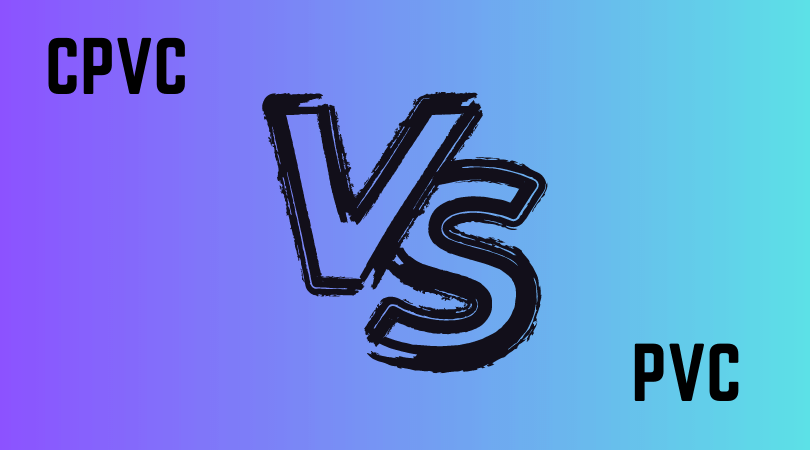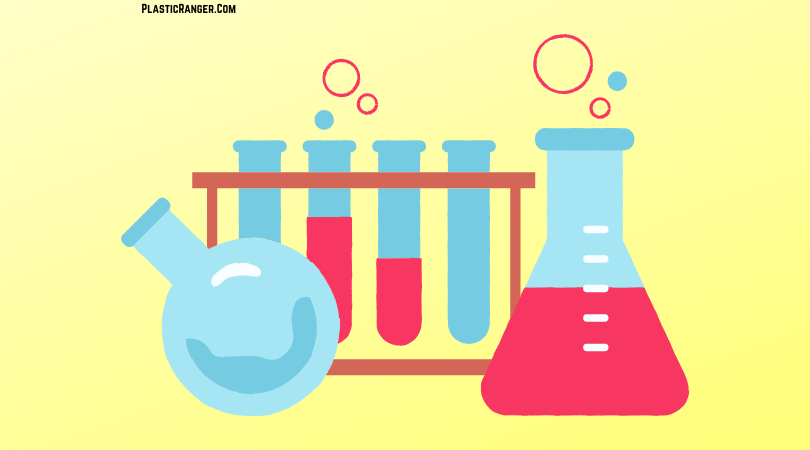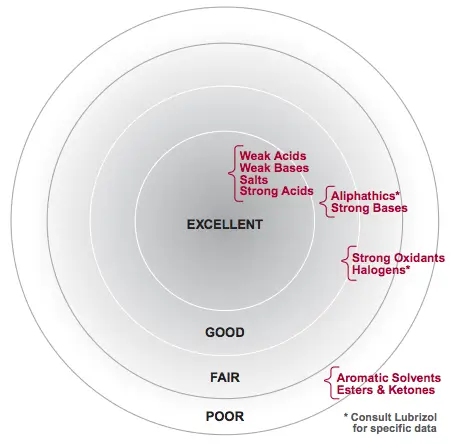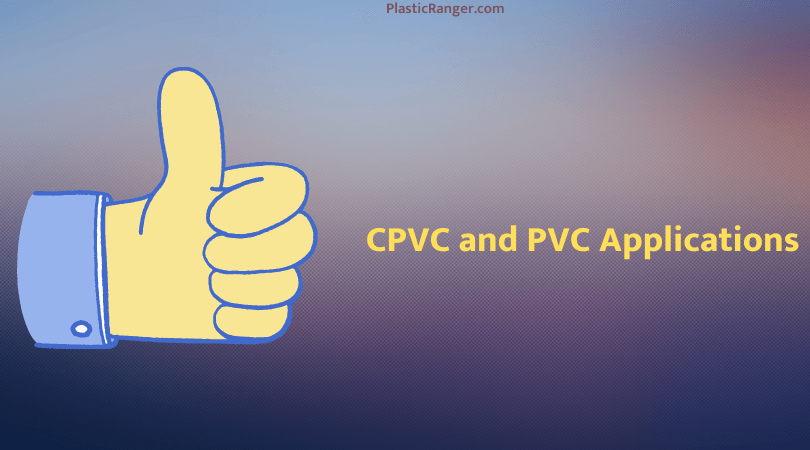Hey folks, get ready for an epic showdown between PVC VS CPVC! In today’s post, I’m about to unravel the mystery and settle the age-old battle. Get ready to have your mind blown!
CPVC VS PVC | Difference Between PVC and CPVC
The main difference between PVC and CPVC is the range of temperatures each can resist. CPVC can withstand temperatures up to 200° Fahrenheit (93°C), while PVC peaks at 140° Fahrenheit (60°C). Above those temperatures, both CPVC and PVC will start showing effects and softening, increasing the risk of pipes and joints failing and, after that, failing the plumbing system.

CPVC (Chlorinated Polyvinyl Chloride) is in the same thermoplastics family as PVC (Polyvinyl Chloride) and shows superior heat and pressure resistance, which is why it is the preferred material for high-end industrial applications among the two.
Because of the various chemical compositions, the bonding agents, primers, and solvent cement differ for CPVC and PVC. For instance, CPVC solvent cement must cater to ASTM F493 specifications, and PVC must cater to ASTM D2564 specifications.
Because of this, CPVC and PVC pipes and fittings, along with their solvents and bonding agents, should not be used reciprocally.
Apart from meeting ASTM standards, different solvent cement is needed depending on the pipe’s size and applications.
To do that perfectly, always check the product containers to ensure you’re the ideal agent for a perfect application.
PVC is only available in nominal sizes. On the other hand, CPVC is available in nominal pipe sizes and copper tube pipe sizes.
CPVC is more flexible than PVC and requires support at a three-foot distance to maintain its position.
Molecular Composition of CPVC and PVC

CPVC is a variant of PVC that undergoes a chlorination process. Typically, PVC and chlorine react with each other through a free radical mechanism, which can be initiated by thermal or UV energy.
The critical distinction between CPVC and PVC lies in their chemical composition. CPVC contains approximately 40% chlorine atoms within its backbone structure.
In contrast, PVC has only 25% chlorine atoms in its backbone, with hydrogen occupying the remaining sites.
The chlorine atoms surrounding the carbon backbone of CPVC are relatively large and bulky, providing a protective barrier for the carbon chain against environmental factors that can potentially weaken other thermoplastics.
Interesting Read – HDPE Pipe Sizes and Dimensions | A Complete Analysis
General Properties: CPVC VS PVC
| Property | Schedule 40 PVC | Schedule 80 PVC | Schedule 40 CPVC | Schedule 80 CPVC |
| Color | white, dark grey | white, dark grey | light grey, off-white, yellow | light grey, off-white, yellow |
| End Shape | plain, bell | plain, bell | plain | plain |
| Max. Working Pressure | 450 PSI | 630 PSI | 450 PSI | 630 PSI |
| Max. Temp | 140°F | 140°F | 200°F | 200°F |
| Min. Temp | 33°F | 33°F | 33°F | 33°F |
| Sizing | NPS | NPS | NPS | NPS |
| Standard Length | 10′, 20′ | 10′, 20′ | 10′ | 10′ |
| Tensile Strength | 7500 PSI | 7500 PSI | 8200 PSI | 8200 PSI |
Chemical Resistance
The exceptional chemical properties of plastics have gained popularity among traditional metal enthusiasts. Both CPVC and PVC exhibit inertness towards most acids, salts, bases, and aliphatic hydrocarbons, significantly prolonging their service life by years or even decades.
The chemical resistance of PVC and CPVC is a notable advantage they share.
However, subtle distinctions arise between CPVC and PVC due to the variation in chlorine content, resulting in unique benefits for each material.
One notable example is the superior resistance to concentrated sulfuric acids, where CPVC outperforms PVC in general scenarios.
Paradoxically, CPVC’s high chlorine content renders it vulnerable to ammonia and other amines, whereas PVC excels in such situations due to its absence of chlorine.

Source - corzan.com
However, before choosing CPVC or PVC for your desired application, consulting the material supplier and referring to a chemical compatibility chart will be wise.
Temperature Resistance
As the chlorine content in CPVC increases, it also gives rise to its Glass Transition Temperature (Tg).
The Tg is when a polymer transforms from a hard, glassy material to a soft, rubbery substance losing its structural solidarity.
As said earlier, CPVC’s higher chemical resistance is shown in the ASTM standards for each material as the max. Service temp. for PVC is up to 140°F (60°C), and for CPVC, it is up to 200°F (93.3°C).
Please note that one should always consult your material supplier about material individual operational capabilities before making any major procuring decision.
Pressure Resistance
CPVC and PVC piping test results with the pressure ratings at 73°F (22.8°C) are the same, but as the temperature increases, CPVC maintains its pressure ratings much better than PVC.
For instance, let’s determine the pressure rating of 10 in. Schedule 80 piping at 130°F (54.4°C) for both PVC and CPVC. Each material is pressure rated at 230 psi at 73°F (22.8°C).
- PVC has a derating factor of 0.31 at 130°F (54.4°C), making it pressure-rated up to 71.3 psi at that temperature (230 psi x 0.31 = 71.3 psi).
- CPVC has a derating factor of 0.57 at 130°F (54.4°C), making it pressure-rated up to 131.1 psi at that temperature (230 psi x 0.57 = 131.1 psi).
While PVC can still be utilized for applications at 130°F (54.4°C), the material can resist significantly less pressure at higher temperatures (above 73°F or 22.8°C) than CPVC.
Engaging Read – Top 5 Heat Resistant Plastic Materials | A List of High Temp Plastic Materials
PVC VS CPVC: Comparision of Derating Factor
| Temperature (F°) | CPVC | PVC |
| 73 | 1 | 1 |
| 80 | 1 | 0.88 |
| 90 | 0.91 | 0.75 |
| 100 | 0.82 | 0.62 |
| 110 | 0.72 | 0.51 |
| 120 | 0.65 | 0.40 |
| 130 | 0.57 | 0.31 |
| 140 | 0.51 | 0.22 |
| 150 | 0.42 | – |
| 160 | 0.40 | – |
| 170 | 0.29 | – |
| 180 | 0.25 | – |
| 190 | 0.20 | – |
| 200 | 0.20 | – |
Fire Resistance
Mainstream thermoplastic such as polyethylene and polypropylene has given all thermoplastics a bad reputation for being flammable. However, vulnerability to melting and burning is not valid for all thermoplastics.
Industrial PVC is engineered to be less prone to flammability and smoke production; specific ASTM tests are designed to determine a material’s fire resistance capabilities.
Flash Ignition Temperature
A tiny outward flame can ignite sufficient combustible gas at the lowest temperature. For CPVC for this to happen, the temperature is about 900°F (482°C), and rigid PCVC should be somewhere around 750°F (399°C).
| Material | F° | C° |
| PVC | 399 | 750 |
| CPVC | 482 | 900 |
| Paper | 232 | 450 |
| White Pine | 204 | 400 |
[visualizer id=”3659″]
Limiting Oxygen Index (LOI): The percentage of oxygen needed in the near atmosphere to maintain a flame. For example, CPVC’s LOI is 60, and PVC’s is 45.
| Material | LOI |
| CPVC | 60 |
| PVC, Rigid | 45 |
Common CPVC and PVC Products
PVC and CPVC resin are generally found in powder or pellet form with additives already mixed in. The resin is then molded into residential, industrial, and commercial products.
The two flagship manufacturing techniques for PVC and CPVC are Injection Molding and Extrusion.
Injection Molding: This technique is advisable for large-volume production. A ram or screw-type plunger forces molten plastic into a mold cavity. Then the resin is again fed into a heated barrel through a mold tool and cooled to harden.
Extrusion: This technique can also be utilized for bulk production. Extrusion starts when the resin is forced through the top of the machine. The raw material will gradually melt by the force of the spinning screw and heater, along with the barrels. It is then formed into a continuous profile and hardened.
Pipes & Fittings
A 2016 study conducted by Zion Market Research found that pipes and fittings account for approximately 62% of the total revenue generated from PVC worldwide.
The exceptional characteristics of PVC, such as effortless installation, corrosion resistance, and resilience against various weather conditions, set it apart from alternative materials.
However, when it comes to pipes and fittings that necessitate superior resistance to heat, chemicals, and pressure, CPVC emerges as the ideal choice.
Sheets and Linings
The remarkable corrosion resistance and exceptional fire performance exhibited by CPVC offer significant advantages for industrial applications, often leading to its utilization in conjunction with Fiber Reinforced Plastic (FRP) through overwrapping techniques.
Conversely, PVC is preferred when sheets and liners require lower pressure and temperature.
Ducting
As air pollution continues to escalate and governments across the globe seek practical solutions to mitigate its impact, the demand for dependable fume handling systems, particularly in corrosive environments, is experiencing a robust expansion.
Depending on the specific applications and temperature requirements, both PVC and CPVC can be employed to meet these needs.
Fascinating Read – How is Plastic made? A Simple and Detailed Explanation.
PVC VS CPVC: Applications

Both PVC and CPVC, thanks to their salient properties like versatility, ease of installation, and low-cost corrosion resistance.
PVC Applications
PVC’s most significant advantages are its low cost and easy installation. It can be installed without any hassle and without using any skilled welders. According to an estimate globally, more than 50% of PVC manufactured is utilized in the construction sector.
Water Solutions: The corrosion resistance feature and relatively low cost make PVC the go-to plastic material for plumbing applications.
- Drinking water
- Sanitary Sewers
- Drainage
- Storm Sewers
Housing: PVC sheets can be fabricated to replace materials like wood as a lightweight and robust alternative. The material is often painted or furbished to imitate other materials.
- Window frames
- Window sills
- Cabinet finishes
- flooring
Signage: As PVC is inexpensive, durable, and easy to paint, its sheets are commonly used for signage.
Electrical cable insulation: With the blending of certain plasticizers, PVC can become softer and more flexible for use as cable insulation. In addition, it’s also fire-resistant and inexpensive.
CPVC Applications
Since CPVC has all the strengths and benefits and PVC, it can be utilized for many applications. However, it is a bit more expensive, which can pose a challenge in replacing it with PVC.
However, in situations where there is a need for chemical resistance and to endure more pressure and heat, CPVC is the ideal option.
Industrial Applications: CPVC is a reliable, long-lasting solution for the most rugged industrial environments and is often referred to for the more demanding industries.
Chemical Processing – Safely transport aggressive chemicals at elevated temperatures, under pressure, without corrosion-related problems.
Mineral Processing – Resist the harsh environments and demands of special and raw material processing operations.
Power Generation – Resists high pressure and corrosive chemicals for long, prevalent in power plants.
Semiconductor – Great flame and smoke resistance improves efficiency and safety and averts contamination in cleanrooms.
Wastewater management – Restricts corrosion completely, even when transporting the harshest disinfection chemicals.
Residential and Commercial Plumbing
For plumbing applications requiring more pressure and temperature compatibility, CPVC provides a sufficient and flexible mechanism resisting pitting, scaling, and bacteria build-up – it doesn’t matter the chlorine and Ph levels.
Retail – Small and mid-sized office buildings and shopping malls.
Hospitality – Restaurants and low-sized office buildings.
High-Rise – Hotels, condos, and apartments span over seven stories.
Education – K-12 schools, colleges, and universities.
Healthcare – Hospitals, medical complexes, and medical clinics.
Multi-family – Buildings spanning six stories or less – apartments, condos, hotels, and motels.
Interesting Read – What is Warpage? | Causes of Warpage | Warpage Variations
CPVC and PVC Limitations
If I’m talking about all the aspects of CPVC and PVC, I believe discussing their limitations is also crucial.
| Limitations | CPVC (Chlorinated Polyvinyl Chloride) | PVC (Polyvinyl Chloride) |
| Temperature Resistance | Higher temperature resistance (up to 200°F/93°C); suitable for hot water applications. | Lower temperature resistance (up to 140°F/60°C); not suitable for hot water applications. |
| Chemical Resistance | Good resistance to many acids, alkalis, and salts. Not suitable for exposure to some solvents, oils, and aromatic hydrocarbons. | Good resistance to many acids, alkalis, and salts. Limited resistance to some solvents and oils. |
| Cost | It is more expensive due to the additional chlorination process. | Generally less expensive than CPVC. |
| Installation Complexity | Requires more care during installation; cement solvent and primer should be applied carefully to ensure a strong bond. | Easier installation; cement solvent and primer should still be applied carefully. |
| UV Resistance | Not UV resistant; should not be used for outdoor applications without UV protection. | Not UV resistant; should not be used for outdoor applications without UV protection. |
| Impact Resistance | Less impact resistance than PVC; more brittle and prone to cracking. | Better impact resistance than CPVC; less prone to cracking. |
| Pressure Handling | It can handle higher pressure applications due to its increased strength and temperature resistance. | Suitable for lower pressure applications; not recommended for high pressure systems. |
| Environmental Impact | Produces toxic byproducts during manufacturing and releases toxic fumes when burned. | Produces toxic byproducts during manufacturing and releases toxic fumes when burned. |
| Biocompatibility | Not recommended for direct contact with food or pharmaceutical products. | Not recommended for direct contact with food or pharmaceutical products. |
| Flammability | More flame-resistant than PVC but still explosive. | Combustible and releases toxic fumes when burned. |
| Flexibility | Less flexible than PVC, making it more difficult to bend and maneuver during installation. | More flexible than CPVC, allowing for easier bending and maneuvering during installation. |
| Pipe Expansion | More significant linear expansion due to temperature changes requires additional considerations during installation. | Lesser linear expansion than CPVC makes it more stable during temperature changes. |
Which One To Choose?
The ultimate decision on which option to choose depends on your needs and purpose. Allow me to provide a rephrased version of the information: The choice between CPVC and PVC ultimately depends on your intended use.
CPVC offers superior resistance and performance, making it highly recommended for applications involving chemical handling, hot water distribution, and commercial purposes. On the other hand, PVC is a more budget-friendly option.
It is well-suited for cold water distribution, recreational use, residential construction, and do-it-yourself (DIY) projects.
FAQs

Below are the frequently asked questions on the CPVC pipe vs PVC. Let’s dig deep to know more.
Can PVC and CPVC be glued together?
Yes. However, CPVC solvent cement technical will work very well with PVC. However, I recommend utilizing suitable weld-on primer and PVC solvent cement for the particular application. Always remember that PVC solvent cement, because of its temperature limitations, is not advisable for CPVC piping.
Which PVC pipe is suitable for outdoor use?
Regarding manufacturers’ recommendations, gray-colored Schedule 80 PVC pipe is a good option for outdoor use as it is a heavy-duty material that can withstand outdoor surroundings.
Are PVC and CPVC Pipes UV resistant?
UV light radiation can cause the outer part of the PVC and PVC pipes to degrade moderately but not significantly. Over time, pipes exposed to sunlight will have a visible color change called “UV Discoloration.
Long-term exposure to sunlight can decrease the CPVC and PVC’s impact strength and resistance; however, it doesn’t seem to significantly impact the pipes’ pressure, malleability, and rigidity. Interestingly, furniture-grade PVC pipes are impact and UV-resistant. They will not change color in sunlight.
What is the life expectancy of PVC and CPVC Pipes?
Both PVC and CPV pipes have a life expectancy of 75 to 100 years.
How Does CPVC reliability compare to other materials?
The chlorination of CPVC gives it a clear advantage over other materials in dealing with common water treatment chemicals. The chlorine molecules in the CPVC pipe block the chlorine and chloramine from attacking the pipe, making it immune to chlorine destruction and extending its lifespan.
Copper enthusiasts should know that copper plumbing is susceptible to chlorine-related issues. Neither copper nor any other material has such an effective chlorine barrier. Permeation and leaching are other problems that can contaminate water running through the pipe.
Suggested Read
- What is TPV Material? | A Simple and Detailed Guide
- 6 Best Plastic Molding Techniques | A Complete Analysis
- PVC Pipes: Sch 40 Pipe Dimensions
Summary
In conclusion, the choice between CPVC and PVC depends on specific application requirements. CPVC offers superior resistance to high temperatures and corrosive chemicals, making it ideal for hot water plumbing and industrial use. PVC, on the other hand, is cost-effective and suitable for cold water systems and non-corrosive environments.
Both materials have their merits, and selecting the right one is essential for ensuring the longevity and efficiency of any plumbing or piping project. Ultimately, the decision should be based on the unique needs and conditions of the application at hand.
Thank you for taking the time to read this. Feel free to share your thoughts and any questions in the comments section.
Wishing you a wonderful day ahead!
Quick Navigation

CPVC and PVC, well explained
Thanks